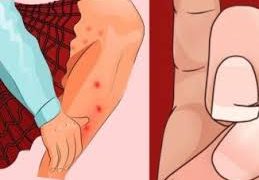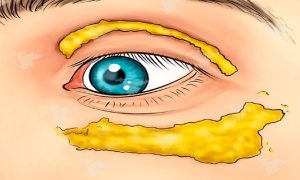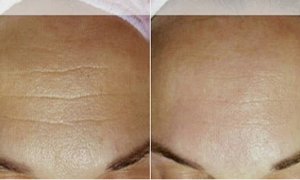Most of us don’t get nearly enough education about our genitalia past puberty. You might learn a little bit about the reproductive system when you’re 10 or 11 years old, but learning what a healthy vagina looks like—or more accurately what a healthy vulva looks like, but more on that in a minute—typically isn’t part of the curriculum.
Odds are you’ve spent many moments checking to see if everything’s looking alright down there not really knowing exactly what you’re looking for. Aside from an annual check up with your gynecologist, you’re generally on your own. That’s why we consulted with a couple of ob-gyns who know the literal ins and outs of your nether regions.
But first…what’s the difference between a vagina and a vulva?
Chances are you’ve had many people refer to your genitalia as your vagina. But everything from the outer and inner labia, to your clitoris, as well as your vaginal opening is actually the vulva, or the external genitalia. The vulva also includes the urethral opening, fourchette (where the labia meet), perineum, anus, and the mons pubis (the area above the labia where pubic hair generally grows). The vagina, on the other hand, is internal. It’s the canal between your vulva and your cervix.
What a healthy vulva looks like
“A healthy vagina can vary from person to person,” says Kameelah Phillips, M.D., an ob-gyn at Lenox Hill Hospital in New York City. Dr. Phillips says she focuses on three main things when it comes to a healthy vagina: appearance, odor, and pain.
Appearance
“Normally, the vagina is pink with rugae or ridges throughout the walls. The labia are sisters—not twins—so they typically do not look exactly alike,” says Dr. Phillips. The Labia Library is a resource that helps people with vulvas understand just how very different labias can look and be.
Another thing you’ll notice regarding your vulva’s appearance is moisture and discharge from the vaginal opening.
“During the reproductive years, a healthy vagina has pink, plump vaginal mucosa, good moisture,and a small amount of discharge that has no odor and is clear to white in color,” says Stephanie McClellan, M.D., an ob-gyn and chief medical officer at Tia. (Additionally, vaginal discharge can sometimes change consistency. It may be white, thicker, and stretchy at some points during your cycle, and clear and thin at others.)
Odor
“Everyone has their ‘normal’ vaginal scent and individuals can typically notice deviations,” says Dr. Phillips. That is to say, every person with a vulva generally becomes acquainted with their own scent, but not every person’s scent is the same.
The scent can become stronger at certain times, like after sex, during or after your period, or after exercise. But while some individuals might become self-conscious of their personal scent, there’s never a need to try and change it. Definitely avoid douching altogether.
Pain
“The vulva and vagina should not be painful areas. During intimacy or with routine touch, it should not hurt,” Dr. Phillips says.
If there is any pain during sexual activity with a partner, you may also want to communicate with them. It may just be an issue of a partner not actually knowing or understanding what your body wants and likes. But generally, pain during sex is not standard.
Signs something is off
If you notice any changes from your norm, it’s worth checking out with your gyno.
Appearance
“Any new or growing bumps should be evaluated,” says Dr. Phillips. For example, you may develop small abscesses from ingrown hairs (especially if you shave or wax), or bartholin’s cysts (small fluid-filled cysts near the vaginal opening)—the latter of which may need to be checked out if it doesn’t improve within a few days.
Additionally, new growths, internal or external, of any kind could indicate an STD or STI (such as herpes) or even cancer, so it’s always a good idea to go in for a check up in these cases.
You also want to keep an eye out for any new or different types of discharge. If the discharge more closely resembles cottage cheese, it could be a sign of a yeast infection. If there is discharge that appears yellow, green, or grayish, it could be a sign of a different type of infection or health issue, such as bacterial vaginosis, vaginitis or pelvic inflammatory disease.
Odor
The vagina has its own microbiome, which essentially keeps the pH of the vagina acidic and prevents the growth of harmful bacteria and yeast. “If there is an imbalance in the vaginal microbiome, infections, odor, and abnormal discharge occur,” says Dr. McClellan. If you begin to notice a strong and/or foul odor, it’s a good idea to see your doctor.
Pain
Experiencing pain is also indicative of an unhealthy vulva and vagina. There can be some exceptions to this, such as in the postpartum period. This could include uterine cramping, perineal pain (especially if there’s been any tearing), as well as hemorrhoids. Additionally, certain health conditions, like endometriosis, might cause more pain than usual before or during periods as well as during intercourse.
Regardless, you would want to make sure that your pain is addressed by your doctor in order to know whether it’s normal for your condition, and more importantly, what you can do about it (if anything).
Vaginal or vulvar itching or burning can also be a sign of infection. In general, healthy vulvas and vaginas should not itch, save for the occasional minor itch from growing out shaved pubic hair (if you choose to shave). Constant, persistent itching or burning is definitely a reason you would want to book an appointment with your gynecologist.






















